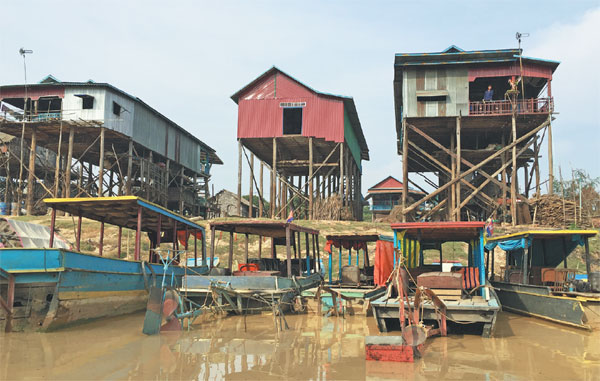Going beyond Angkor Wat
 |
|
When the water level in Cambodia's Tonle Sap Lake drops, the long stilts supporting homes in Kampong Phluk, a floating village, are left exposed. Photos by Shen Ye / For China Daily |
Besides the famous temple ruins, this country also boasts beautiful beaches, wildlife and a fascinating modern history
After watching the sun slowly sink into the horizon, we dived into the water with our snorkels and were immediately surrounded by a galaxy of "stars".
The spectacle, created by bioluminescent plankton, can be witnessed inmost places along the southwestern coast of Cambodia and is a treat for any nighttime swimmer.
Our small group had moored a boat near the coral off Bamboo Island, a short ride from the white-sand beaches of Sihanoukville. As dusk approached, we drank a beer and enjoyed the silence, which was broken only by our captain performing acrobatic dives from the hull into the warm, clear water.
When darkness fell, the sparkling plankton came alive, providing just one of the many visual feasts that visitors to this country can expect.
Although largely known for the Angkor Wat Archeological Park, a massive collection of centuries-old ruins in the north, and the Khmer Rouge, Cambodia also boasts beautiful beaches, forests and wildlife reserves, as well as myriad sites providing insight into the country's fascinating yet often harrowing modern history.
For many tourists, Phnom Penh, the capital, is the first port of call. While not the most picturesque place, it does offer a taste of modern Cambodian life.














